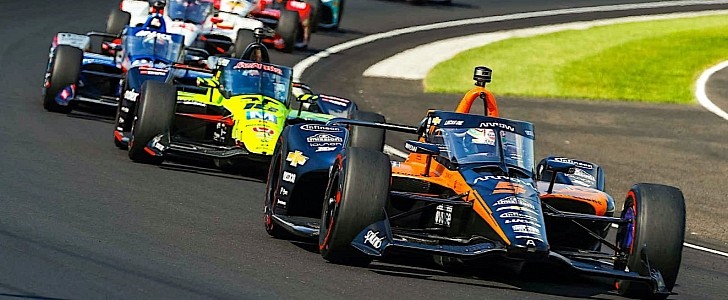Chevrolet came back to the IndyCar series eight years ago, with the goal of making a splash. And a splash it made, as since 2012, six manufacturer championships went to the bowtie carmaker.
Chevy is, alongside Honda, the main supplier of engines for the American racing series. The engine currently fielded by the comapny was supposed to be replaced by a new, hybrid one for the 2022 season, but as a result of the global health crisis, its introduction was pushed to 2023.
The announcement was made by Chevrolet over the weekend, accompanied by the news that it has decided to extend its partnership and involvement with IndyCar until the end of the current decade.
“To be able to announce a long-term, multi-year extension with our great partners at Chevrolet is phenomenal,” IndyCar President Jay Frye said in a statement. “It’s an exciting time in INDYCAR with the innovations in the car, the new 2.4-liter engine and hybrid technology.”
The powerplant in question is a hybrid 2.4-liter, twin-turbocharged V6 that will move away from the manual handheld starters and allow drivers restart their car quickly should it stop on the track. This is for the first time IndyCar racers will no longer use manual electric starters and, according to Chevrolet, this should improve race quality by reducing the number of caution flags.
As per the details available so far, the new engine should also provide an additional 100 hp of power, meaning the IndyCar racers will have over 900 hp on tap.
As per regulations, the hybrid powertrain to be deployed in the American series should consist of a multi-phase motor, an inverter and an electric storage device that will recover the energy generated under braking. It should have been used from 2022 to 2027, a timeframe during which we are also to expect the launch of a new generation chassis for the cars.
The announcement was made by Chevrolet over the weekend, accompanied by the news that it has decided to extend its partnership and involvement with IndyCar until the end of the current decade.
“To be able to announce a long-term, multi-year extension with our great partners at Chevrolet is phenomenal,” IndyCar President Jay Frye said in a statement. “It’s an exciting time in INDYCAR with the innovations in the car, the new 2.4-liter engine and hybrid technology.”
The powerplant in question is a hybrid 2.4-liter, twin-turbocharged V6 that will move away from the manual handheld starters and allow drivers restart their car quickly should it stop on the track. This is for the first time IndyCar racers will no longer use manual electric starters and, according to Chevrolet, this should improve race quality by reducing the number of caution flags.
As per the details available so far, the new engine should also provide an additional 100 hp of power, meaning the IndyCar racers will have over 900 hp on tap.
As per regulations, the hybrid powertrain to be deployed in the American series should consist of a multi-phase motor, an inverter and an electric storage device that will recover the energy generated under braking. It should have been used from 2022 to 2027, a timeframe during which we are also to expect the launch of a new generation chassis for the cars.
















